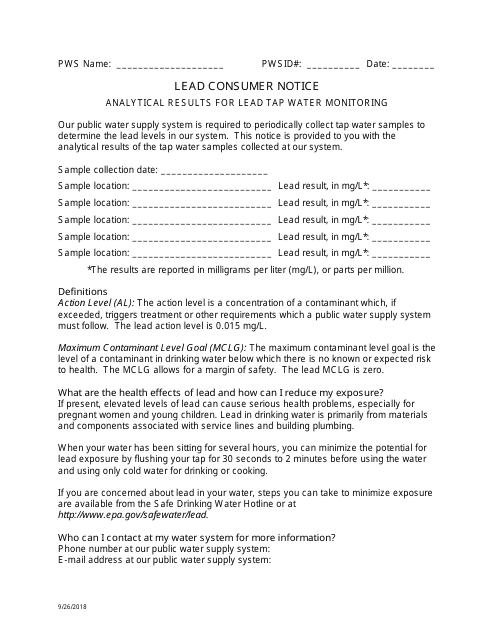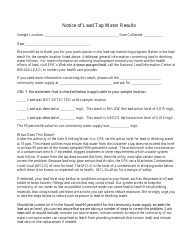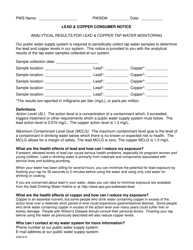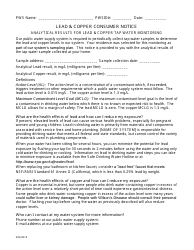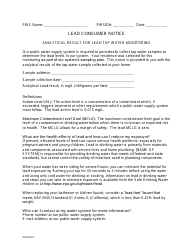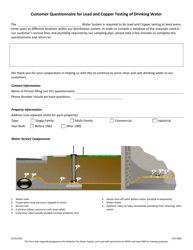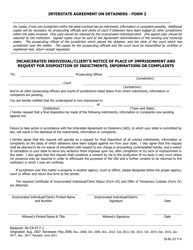Lead Consumer Notice for Nontransient Noncommunity Systems - Iowa
Lead Consumer Notice for Nontransient Noncommunity Systems is a legal document that was released by the Iowa Department of Natural Resources - a government authority operating within Iowa.
FAQ
Q: What is a lead consumer notice?
A: A lead consumer notice is a notification given to consumers when the lead concentration in their drinking water exceeds the action level set by the Environmental Protection Agency (EPA).
Q: What are nontransient noncommunity water systems?
A: Nontransient noncommunity water systems are public water systems that serve the same people on a regular basis, such as schools, offices, and factories.
Q: What is the purpose of the lead consumer notice for nontransient noncommunity systems in Iowa?
A: The purpose of the lead consumer notice is to inform consumers about the presence of lead in their drinking water and provide them with guidance on reducing their exposure to lead.
Q: What is the action level for lead in drinking water set by the EPA?
A: The action level for lead in drinking water set by the EPA is 15 parts per billion (ppb). If the lead concentration exceeds this level, the lead consumer notice is required to be issued.
Q: What should consumers do if they receive a lead consumer notice?
A: Consumers should follow the guidance provided in the lead consumer notice, which may include steps to reduce lead exposure and information on alternative sources of drinking water.
Q: Who is responsible for issuing the lead consumer notice?
A: The water system operator or owner is responsible for issuing the lead consumer notice to affected consumers.
Q: Is it safe to consume water with lead concentrations below the action level?
A: While it is generally safe to consume water with lead concentrations below the action level, it is still recommended to follow the guidance provided in the lead consumer notice to minimize exposure to lead.
Q: What are the potential health effects of consuming water with elevated lead concentrations?
A: Consuming water with elevated lead concentrations can have adverse health effects, particularly for young children and pregnant women. These effects may include developmental delays, learning disabilities, and neurological damage.
Form Details:
- Released on September 26, 2018;
- The latest edition currently provided by the Iowa Department of Natural Resources;
- Ready to use and print;
- Easy to customize;
- Compatible with most PDF-viewing applications;
- Fill out the form in our online filing application.
Download a printable version of the form by clicking the link below or browse more documents and templates provided by the Iowa Department of Natural Resources.
